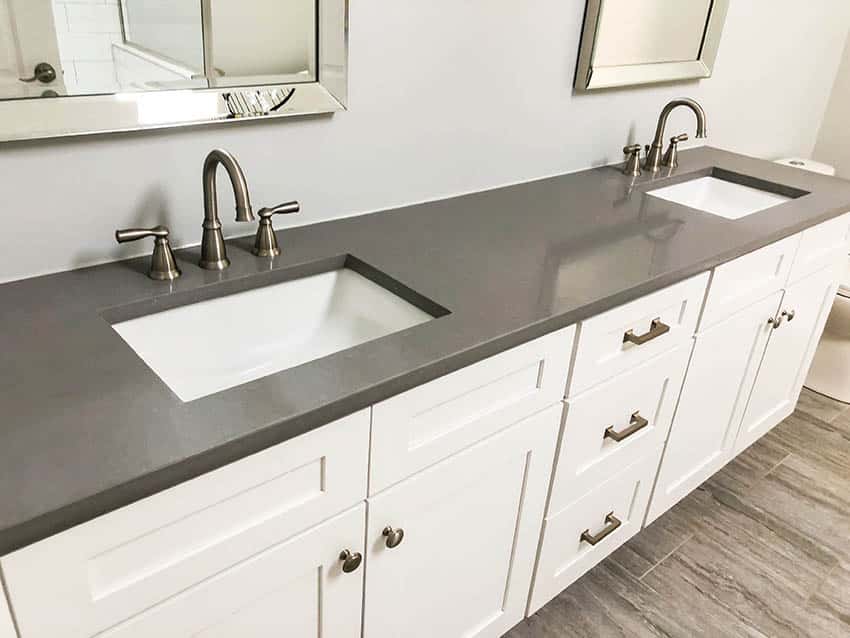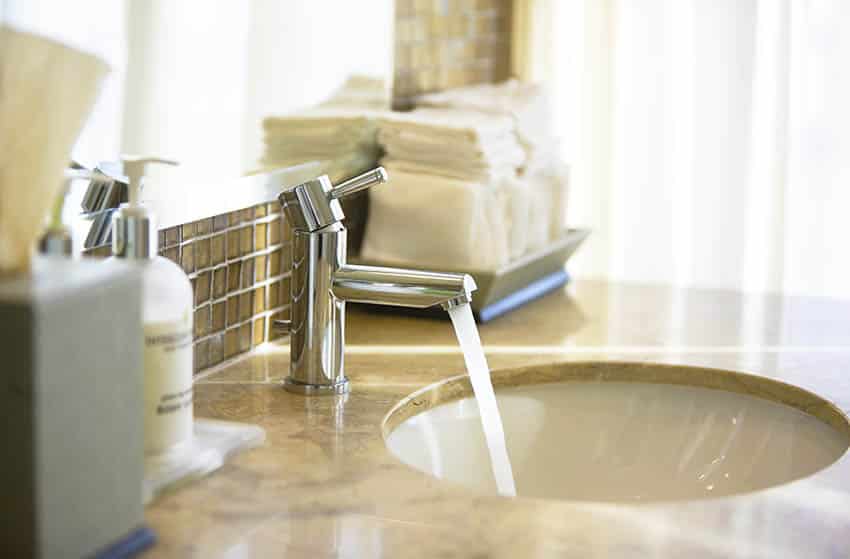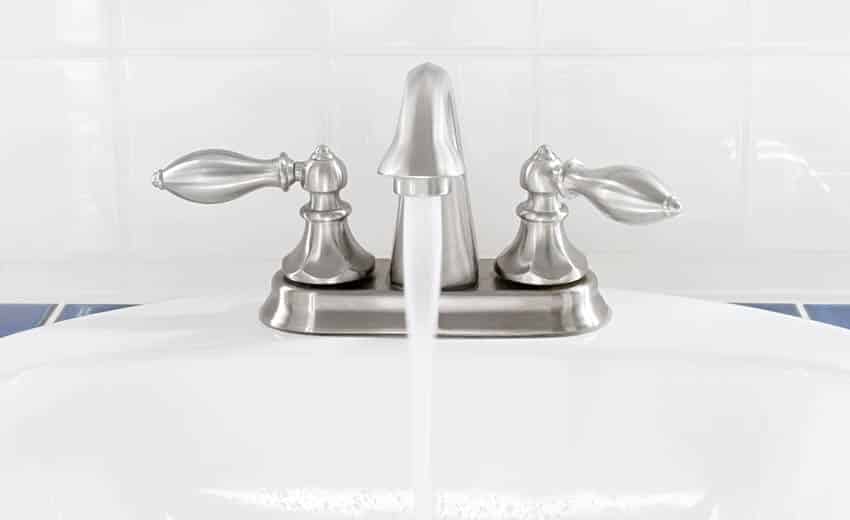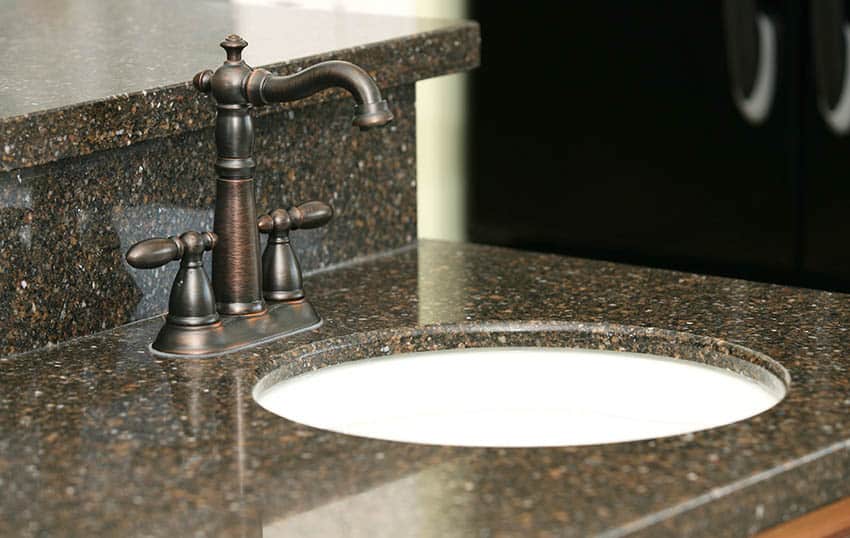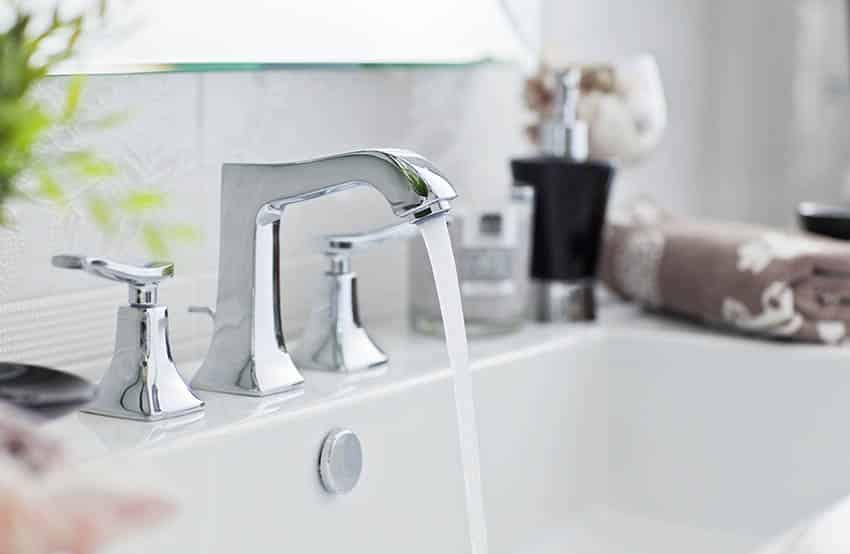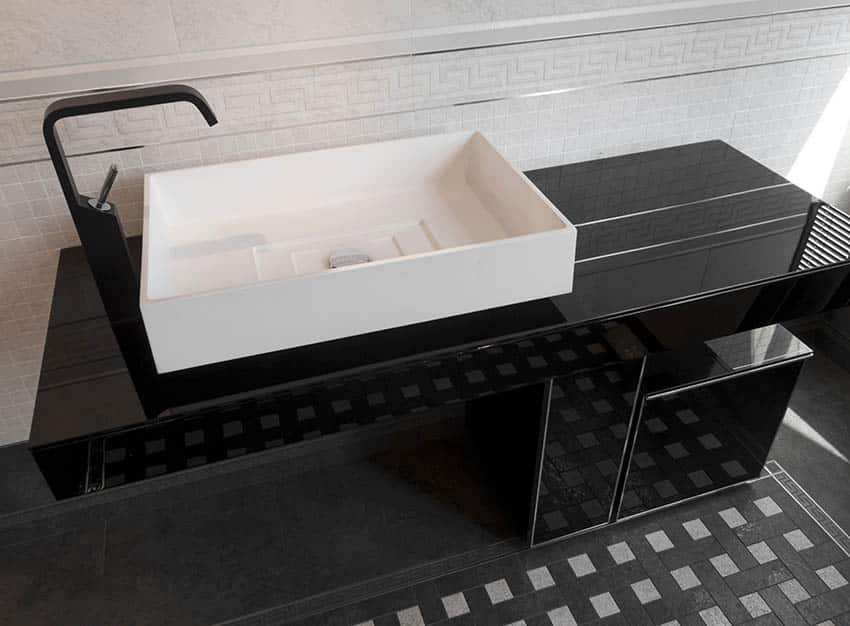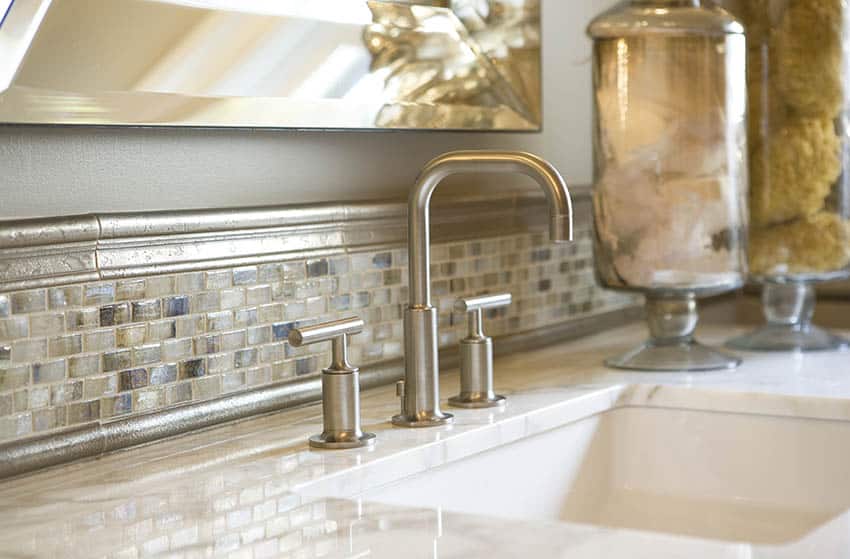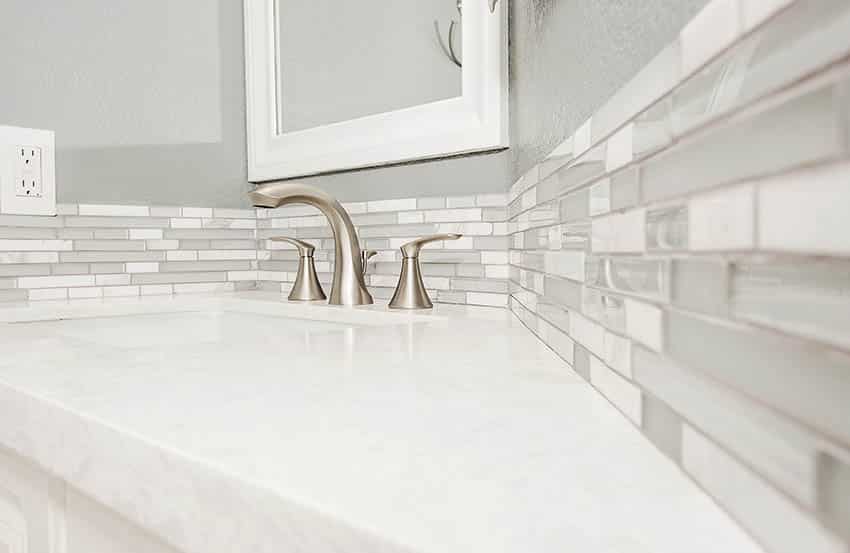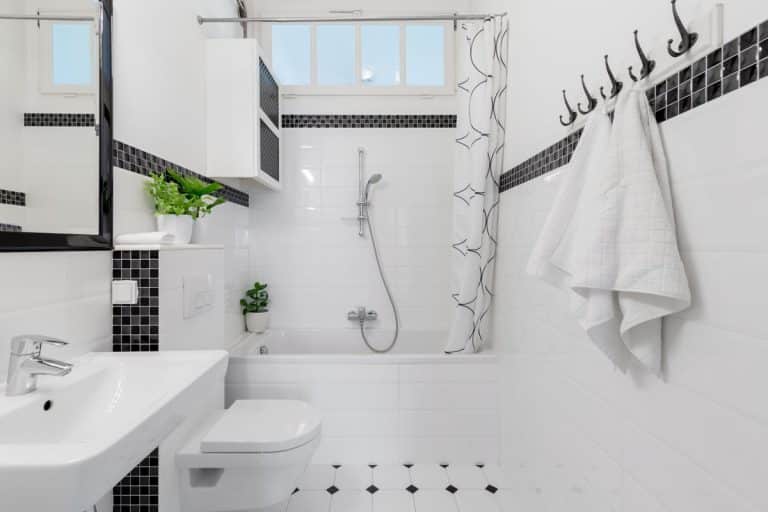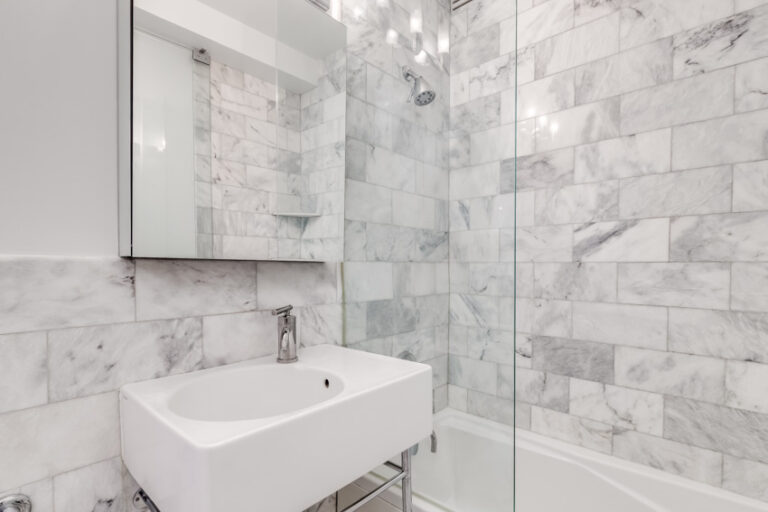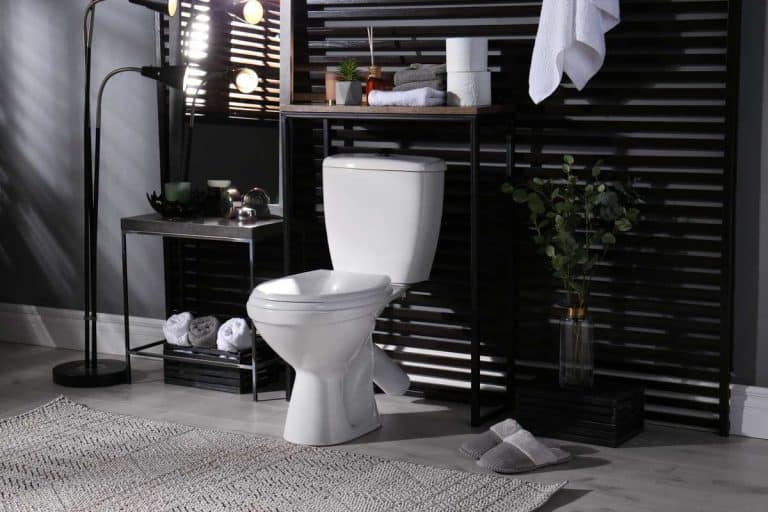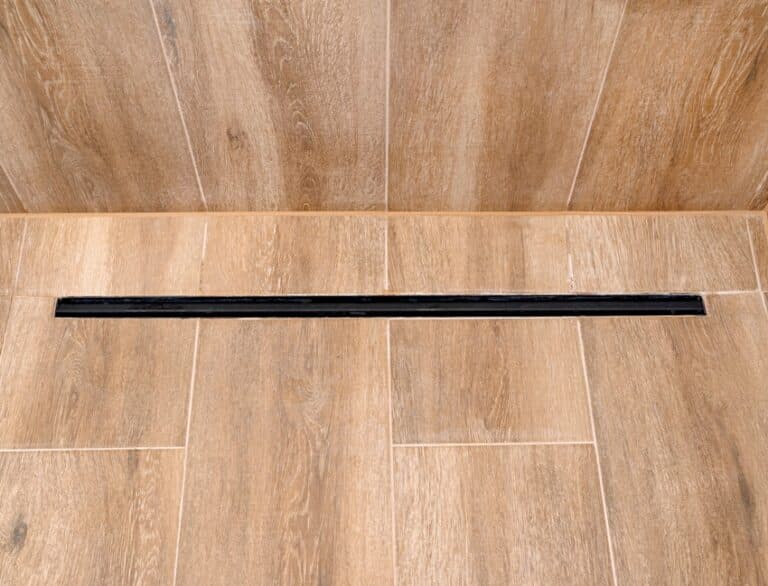Bathroom Faucet Finishes (Types and Pros & Cons)
When putting the finishing touches to your dream bathroom, you must put a lot of thought into the fixtures, such as your faucets. Aside from the shape and style of your home’s faucets, one other thing you will want to choose carefully is your faucet finishes. The finish will determine how well it suits your interior design.
Faucet finishes are the coatings applied to the surface and have two functions. First, they make the fixture look more attractive, and second, the finish often affects its durability.
Depending on your particular vision for how your bathroom should look, you need to look into the various faucet finishes and their pros and cons. Here are some of the most common bathroom sink faucet finishes.
Chrome Faucet
Chrome faucet finishes are considered attractive, with a silvery polished shine that makes them a striking feature for any bathroom, regardless of style.
Chrome is an alloy of the metal chromium, which, while being lightweight, is also quite durable. One reason why it’s a good faucet finish is that it is resistant to corrosion. Chrome is also one of the cheapest finishing materials and is easy to maintain.
However, chrome will tarnish over time, and while the highly polished surface is attractive, it also means that scratches, fingerprints, and water spots will stand out and be extremely visible. Luckily, chrome is relatively easy to clean; all you have to do is wipe it down occasionally with a soft cloth and soap.
Chrome-finished faucets will suit almost every bathroom style, though they are especially well suited to modern, industrial, and even Scandinavian styles.
Copper Faucet
A copper finish faucet uses the mineral copper as a protective coating. Copper is a versatile mineral used in a variety of applications due to its conductivity, malleability, and ductility.
Copper finishes work well if you are going for a farmhouse or rustic style look for your bathroom design. They also work with mid-century design styles.
One major pro when it comes to copper finish faucets is that copper protects the faucet from corrosion. They are also considered attractive because of the bold reddish gold color of copper.
While copper does naturally fade when exposed to sulfur and oxide compounds, faded copper is still considered attractive and gives a nice “aged” and old-fashioned feel to your fixtures.
The major con to faucet copper finishes is that they are a bit less durable than other finishes in this list. Also, its bold color might not suit all design styles, and it can be hard to match with your other accessories.
Nickel Faucet
Nickel finishes are achieved by using the metal nickel to give the faucet a finish that has a shiny silvery sheen. Two common types of nickel finish faucets are used in bathrooms: brushed nickel and polished nickel.
Brushed Nickel
This type of finish is accomplished by first rubbing nickel over a faucet and then brushing the surface with a wire brush. The whole thing is then finished with a protective layer of lacquer. The result is a slightly silvery surface that is protected from wear and tear.
Brushed nickel is one of the most durable faucet materials available. Unlike polished nickel, which we will discuss more below, brushed nickel has a more matte surface caused by the small abrasions left by the wire brush. This matte surface is less prone to showing water spots.
Brushed nickel finishes last longer than oil-rubbed bronze and chrome. These faucets are also easy to match with other bathroom accessories.
This finish is more expensive than chrome but cheaper then oil-rubbed bronze. It also doesn’t go well with stainless steel, so you should consider that when accessorizing your bathroom. Aside from that, however, it’s a very versatile finish that will go with almost any bathroom style.
Polished Nickel
Polished nickel finishes are achieved by polishing nickel-plated brass to create a shiny and highly reflective surface. Faucets that use this type of finish are highly durable and relatively easy to clean.
One con, however, is that these types of finishes have a reflective surface so fingerprints and water spots are highly visible. You are going to need to wipe down these faucets and clean them regularly. They are also one of the more expensive finishes on this list.
Polished nickel finish faucets look great in traditional and modern bathrooms. They are also good options for a European or Victorian style designs.
Brass Faucets
Brass finish faucets use metal brass in their coatings. Brass is a copper alloy, so brass finishes have a slightly reddish-brown tinge. Two common types of brass finishes are used for bathroom faucets: polished brass and satin brass.
Polished Brass
This classic faucet finish material is mostly produced by polishing solid brass and finishing it with a lacquer to minimize tarnish.
Some manufacturers also produce “polished brass finish faucets” using metal alloys instead of brass. These alloys are electroplated before the lacquer is added.
Both ways end up producing a finish that is bright, shiny, and highly reflective. They come in various attractive shades of golden brown.
Polished brass finishes are prized for their durability and for the fact that they don’t tarnish. They look sleek and polished and go well with various designs, from traditional to vintage. Minimalist design styles and accessories will also look good with polished brash finish faucets.
The disadvantage to polished brass is that it’s a bit more expensive than the other finishes discussed in this post. The shiny surface of a polished brass finished faucet is attractive but also likely to show water spots and fingerprints. The lacquer layer will also eventually dull.
Satin Brass
Stain brass has a textured finish, so satin brass faucets have a smooth matte look compared to polished brass.
The matte surface of satin brass finish faucets conceal fingerprints and watermarks better than polished brass, making them easier to keep clean. However, it’s a bit more difficult to find accessories and other fixtures that match the look of satin brash.
If you plan to use traditional, contemporary, or modern design styles for your bathroom, satin brass-finished faucets should fit the vision. They are clean and simple looking, but the burnished gold-brown color lends an air of elegance and luxury.
Oil-Rubbed Bronze Faucet
Oil-rubbed bronze-finished faucets are available in a variety of slightly brown shades. These finishes are chemically darkened to look like aged bronze, so they are great faucets to use if you are going for a slightly vintage or antique look.
Oil-rubbed bronze is durable, and the surface doesn’t really show water sports and fingerprints, so it’s easy to keep clean. They are, however, a little expensive.
Stainless Steel Finish
This iron-based alloy is resistant to corrosion and rust. Stainless steel finishes have a highly reflective surface that resembles the precious silver metal but is more affordable and durable.
Stainless steel finishes are easy to clean; wipe them down with soap and water. They are also scratch-resistant. They are slightly expensive, though.
If you are designing a bathroom that uses modern, industrial, or contemporary styles, these are good types of faucets to look into. It also looks good with wood or marble, so if you consider using these materials on your countertops, these faucets will match them nicely.
Matte Black Finish
Matte black finishes are achieved by applying a powder coating to iron, steel, or brass. The resulting finish is either dull or satin.
Matt Black finish faucets are easy to clean and won’t show fingerprints or smudges as prominently as shinier finishes will.
They are considered modern and trendy and go well in art deco, modern, eclectic, and minimalist bathrooms.
Custom Faucet Finishes
If none of the finishes we listed above sound like something you would like to use, you should look into custom-finish faucets. Other metal finishes include gold, bronze, silver, simulated copper, zinc, and pewter.
You can also get faucets finished with paint or powder coatings in a variety of colors and shades. There are also faucets with ceramic and glass finishes that can be glazed to match your bathroom sink. Ask your manufacturer for a full catalog of their available faucet finishes before you decide.
What Is The Most Durable Finish For Faucets?
The nickel-based finishes we discussed above are some of the most durable available.
While polished nickel and brushed nickel are about evenly matched regarding durability, note that the shinier surface of polished nickel will be more prone to showing stains and smudges. Nickel finishes are also slightly more expensive than the other ones we’ve discussed.
If durability is really important to you, you should also look at what the manufacturer has available in stainless steel, brass, and bronze. They are also pretty durable and a little less pricey than nickel.
What Is The Most Popular Bathroom Finish?
Chrome is probably the most common bathroom faucet finish. The silver-toned shine of a chrome-finished faucet is considered quite attractive. It’s also versatile and will suit a variety of bathroom styles.
It is durable, though maybe not as durable as nickel and other metal-based faucet-finished materials. One of the major reasons for its popularity is its affordability.
You can often find a good chrome-finished faucet for about $50, while a nickel faucet can run up to $600.
Which Finish Is Best For Bathroom Faucets?
The metal-based finishes, even chrome, are best for bathroom faucets. Most of the finishes mentioned here are resistant to corrosion, which is important for bathroom faucets.
The final factor you should consider when deciding on the best faucet finish is how it will fit with the overall style of your bathroom. The fixture finish you choose should complement the room and be cohesive with the knobs, pulls, towel racks, and other hardware.
Best Finish To Use For Hard Water?
If you live in an area with hard water, you will probably have a problem with water spots. Though most of the finishes we’ve listed here are easy to clean, just wipe them down with soap and water; you might choose a material that doesn’t show water spots that easily.
Shiny or highly reflective material is not a good option for faucet finishes in areas with hard water. Water spots will really show up on shiny surfaces so, unless you want to be cleaning your faucet almost constantly, go with the other materials.
Matte finishes will not show water marks as easily as shiny or polished finishes. Materials that say “matte”, “brushed,” or “satin” is the best faucet finishes for hard water. (Excluding matte black)
Of the finishes we list here, the best would be brushed nickel, satin brass, and oil-rubbed bronze.
Take note: one finish we mentioned here was matte, and while it does say “matte,” matte black isn’t a good faucet finish for areas with hard water. The black color of the surface will contrast with white water marks, making them more visible.
No matter what type of finish you get for your bathroom faucets, the best way to prevent hard water marks would be to dry your faucets immediately after use. Water stains only occur when water dries on the surface.
You should also occasionally clean your faucets with a solution of water, vinegar, lemon juice, and dish soap. This solution will get rid of any mineral buildup that causes watermarks.
Mix the vinegar and water (use a one-to-one ratio) then add some lemon juice and a few drops of dish soap. Put this solution in a spray bottle and spray it on your faucets.
Let the solution sit for around twenty minutes. Then, gently scrub the solution off with a rag or sponge. Take care not to use abrasive materials, as you don’t want to scratch the finish.
For more related content, visit our article about bathroom design tools you can use to create and visualize your own bathroom projects.

